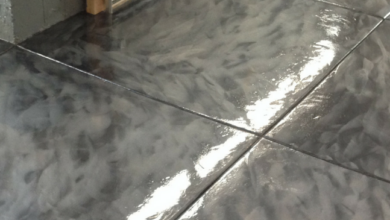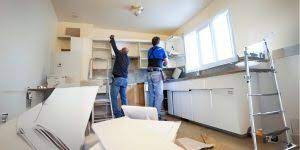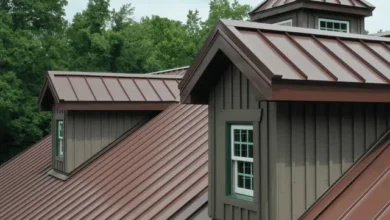House refurbishment is one of the most rewarding ways to upgrade your home. Whether you’re taking on a full renovation project or just improving one space, success depends on smart planning, skilled workmanship, and attention to the finer details — like plastering.
In this guide, you’ll find practical advice on planning your refurbishment, understanding the plastering process, and using the right tools and materials — including expert tips for dealing with loose plaster, installing plasterboard sheets, and working within your budget.
What Is a House Refurbishment?
A house refurbishment can involve anything from redecorating to major structural improvements. Typical updates include:
- Altering layouts and removing internal walls
- Upgrading central heating systems
- Installing or replacing plasterboard sheets
- Replastering old or damaged walls
- Improving energy insulation and soundproofing
- Renovating bathrooms, kitchens, and living spaces
- Tackling cosmetic or functional issues like loose plaster
Every improvement should enhance your home’s comfort, appearance, or resale value.
Start With a Clear Plan
A successful project begins with strong planning. Before you get started, ask yourself:
- What’s your budget and time frame?
- Are there any structural changes that require approval?
- Which jobs can you do yourself, and which need professional input?
- What materials and tools will you need?
A solid plan will help you manage time, costs, and materials — and reduce the risk of delays or poor-quality work.
Why Plastering Shouldn’t Be Overlooked
Plastering is often treated as a background task, but it plays a central role in any quality renovation project. Here’s why house refurbishment plastering should be high on your priority list:
- It repairs loose plaster and damaged surfaces
- It creates a smooth, even surface ready for paint or tile
- It improves thermal and acoustic performance
- It hides imperfections and old finishes
- It allows for the secure fitting of plasterboard sheets
Skipping this step is a common mistake that can affect every finish that comes after — from paintwork to tiling.
Understanding the Plastering Process (Step-by-Step)
Here’s a simplified breakdown of how plastering work typically goes:
- Prep the area – Clear dust and debris, and remove any loose plaster
- Mix the plaster – Use a power mixer on low speed in a clean bucket for an even consistency
- Apply the first coat – Use a plastering trowel, starting in one corner and working across the whole surface
- Allow it to firm – The plaster should begin to set before the second coat
- Apply the second coat – This thinner layer smooths out the surface and fills in imperfections
- Trowel with longer sweeps – These help smooth bumps and create a level finish
- Final smoothing – Use fine grit sandpaper once dry to remove any minor imperfections
- Allow to dry completely – Do not paint or decorate until the plaster is fully dry
Each step contributes to a solid and visually flawless result.
Key Plastering Tools and Materials
To achieve a clean, professional finish, make sure you have the right tools:
- Plastering trowel
- Plasterboard sheets
- Power mixer
- Fine grit sandpaper
- Clean bucket
- Step ladder
- Protective sheeting for floors and furniture
Using the correct tools helps you avoid uneven finishes, reduce waste, and complete the job more efficiently.
When to Replaster a Wall
You should consider replastering if you notice:
- Cracks or crumbling sections of loose plaster
- Bumps and uneven surfaces that paint or filler won’t fix
- Water damage or visible stains
- Outdated finishes incompatible with modern décor
- Poor soundproofing or insulation
Dealing with these issues early in the process ensures a higher-quality result across the entire renovation project.
Smart Budgeting Tips
Refurbishment costs can vary widely, but strategic planning helps keep your budget under control.
Spend on:
- Skilled plastering work and structural repairs
- High-quality plasterboard sheets and materials
- Reliable tools like a plastering trowel or power mixer
Save on:
- DIY-friendly tasks like sanding or painting
- Reusing fixtures or fittings where possible
- Holding off on decorative extras until essential work is complete
Understanding how long each task takes — from mixing plaster to smoothing it with fine grit sandpaper — helps you better manage your schedule and finances.
Final Tips for a Successful House Refurbishment
- Let each coat dry completely before moving on
- Use the right tools for each step of the job
- Don’t rush plastering — even small flaws will show later
- Protect floors and furniture from drips and dust
- Keep the project organised with a clear checklist
- And if you’re unsure where to begin, companies like Probable Group can offer professional guidance to help you plan with confidence
In Summary
Every successful house refurbishment begins with clear planning and ends with polished results — and plastering is the step that ties it all together. Whether you’re fitting plasterboard sheets, fixing loose plaster, or working to a tight budget, doing the job properly will elevate the look and feel of your home for years to come.
Don’t rush it. Don’t skip it. And if you’re unsure, get advice from a skilled tradesperson who understands the difference quality plastering makes.





